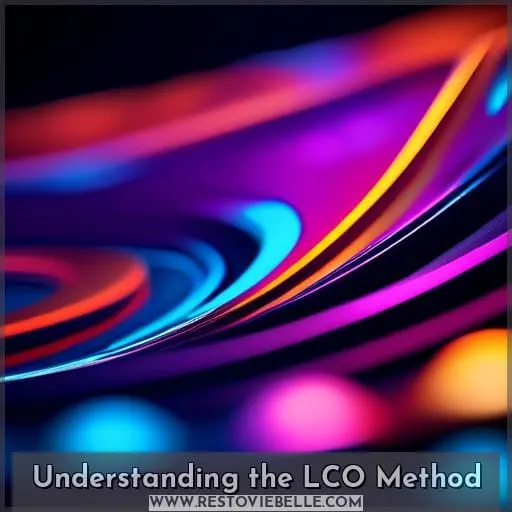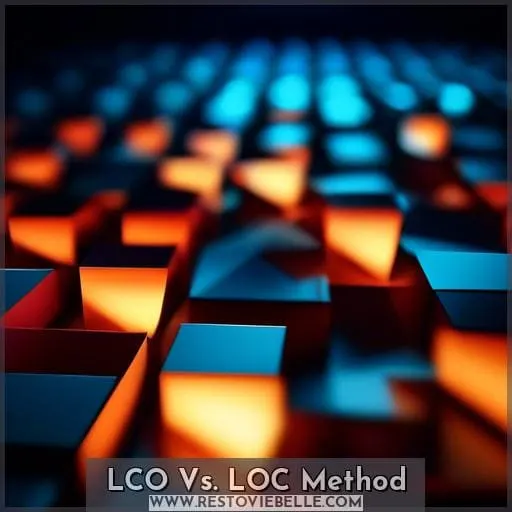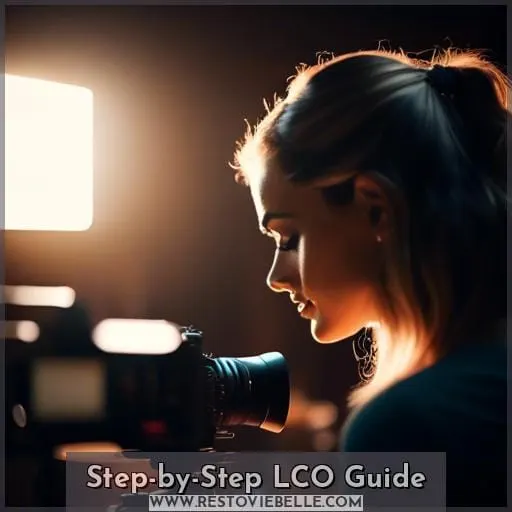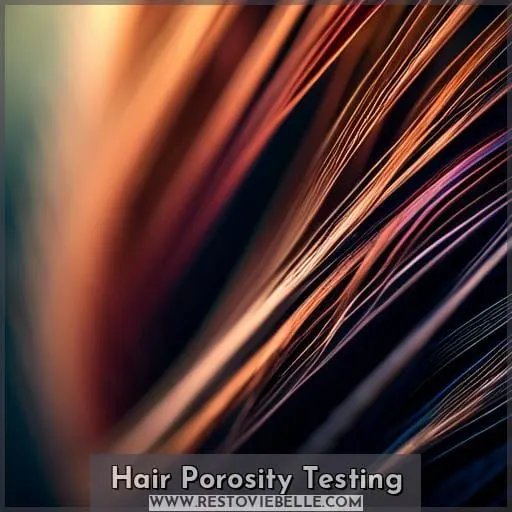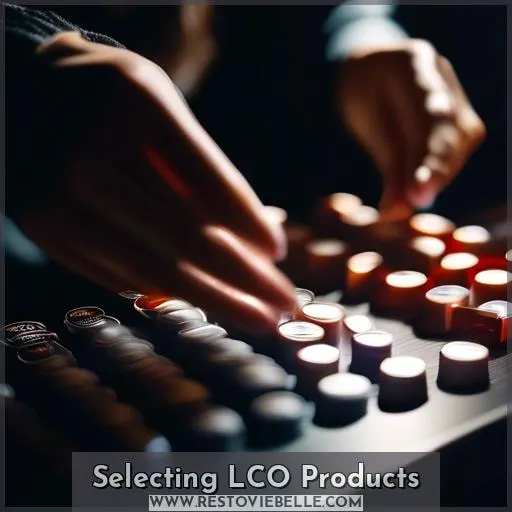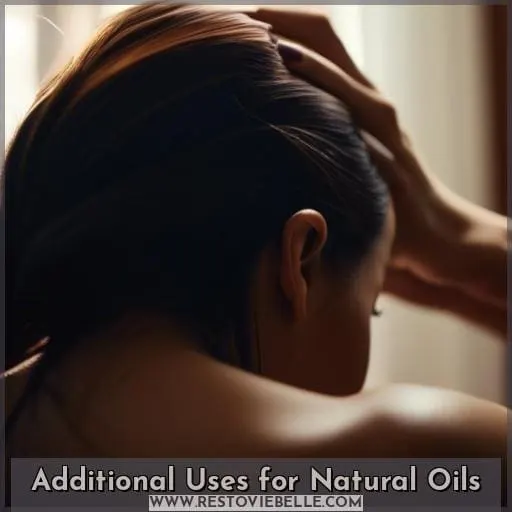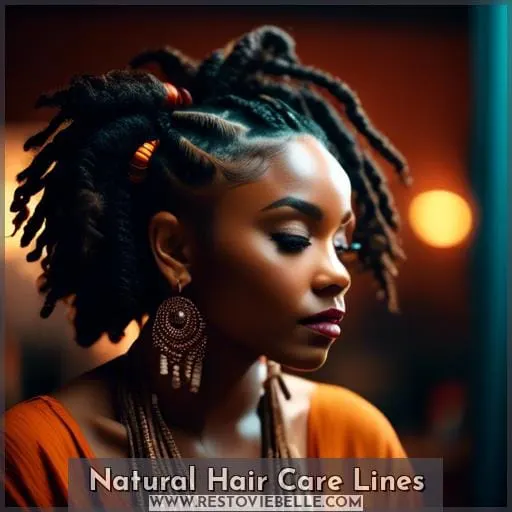This site is supported by our readers. We may earn a commission, at no cost to you, if you purchase through links.
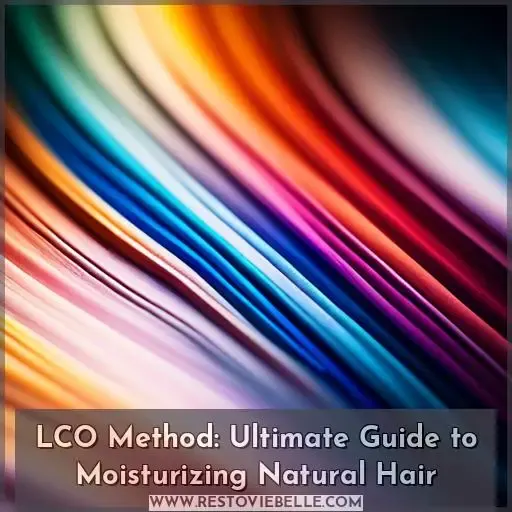
This scientifically-backed approach layers liquid, cream, and oil to lock in hydration, catering especially to those with low porosity strands craving that extra nourishment.
Dive into a routine that not only quenches your hair’s thirst but also empowers you with control over its health and vibrancy.
Embrace the LCO method and witness your natural hair flourish with newfound resilience and shine.
Table Of Contents
- Key Takeaways
- Understanding the LCO Method
- LCO Vs. LOC Method
- Ideal Candidates for LCO
- Step-by-Step LCO Guide
- Hair Porosity Testing
- Frequency of LCO Application
- Selecting LCO Products
- LCO Method for Kids
- Additional Uses for Natural Oils
- Natural Hair Care Lines
- Frequently Asked Questions (FAQs)
- Can the LCO method be used on chemically treated hair, such as relaxed or dyed hair, without causing damage?
- How does the LCO method affect hair color retention for dyed hair?
- Is there a risk of product buildup with frequent use of the LCO method, and how can it be prevented?
- Can the LCO method be effectively incorporated into a hair care routine that includes protein treatments?
- How does the LCO method influence the effectiveness of other hair treatments, such as scalp oils or anti-dandruff products?
- Conclusion
Key Takeaways
The LCO method is a three-step hair moisturizing routine ideal for individuals with low porosity hair, which involves applying products in the order of liquid, cream, and then oil. This method is designed to maximize moisture retention, addressing issues such as dryness and frizz, and is particularly beneficial for hair that struggles to absorb moisture.
The LCO method differs from the LOC method, which is more suitable for high porosity hair, by reversing the order of cream and oil application. A step-by-step guide for the LCO method includes starting with a moisturizing shampoo, followed by a leave-in conditioner, a hair cream for added moisture, and finally sealing with oil to lock in the moisture.
Understanding the LCO Method
The LCO method, which stands for Liquid or Leave-in conditioner, Cream, and Oil, is a hair care technique designed to maximize moisture retention in natural hair.
By applying products in this specific order, the method aims to hydrate the hair with a liquid, add moisture with a cream, and then seal it all in with an oil.
This approach is particularly beneficial for those with low porosity hair, as it allows for easier absorption of lightweight products without causing buildup.
If you’ve found that the LOC method isn’t quite meeting your hair’s hydration needs, the LCO method could offer an alternative that better suits your hair’s response to moisturizing techniques.
Definition and Basics
In the realm of natural hair care, the LCO method stands as a beacon for those seeking to infuse their curls with lasting moisture. This technique, which stands for Liquid or Leave-in conditioner, Cream, and Oil, is designed to lock in hydration and enhance the manageability of your hair.
By following this specific order, you’re ensuring that each layer of product builds upon the last to maximize moisture retention. The LCO method is particularly beneficial for those with low porosity hair, as it employs lightweight products that are more easily absorbed, preventing buildup that can weigh down your strands.
Whether you’re looking to revitalize dry, brittle hair or maintain the health of your natural curls, the LCO method offers a structured routine that can be tailored to meet the unique needs of your hair.
With the right combination of LCO products, you can achieve hydrated, vibrant curls that are protected from breakage, dryness, and frizz.
Benefits for Natural Hair
Transitioning from the basics, the LCO method significantly boosts moisture retention, enhancing curl definition while taming frizz.
By layering leave-in conditioner, cream, and natural oils, it caters to your hair’s porosity, ensuring each strand receives the hydration it craves.
This method not only promotes scalp health but also locks in moisture, leaving your hair feeling revitalized and looking lustrous.
LCO Vs. LOC Method
When you’re exploring ways to keep your natural hair well-moisturized, you might find yourself choosing between the LOC and LCO methods. Both techniques involve layering products to lock in moisture, but the order in which you apply them can make a significant difference.
If you’re considering which method to adopt, it’s essential to understand that the LCO method, applying liquid, then cream, and finally oil, may be more suitable for low porosity hair.
Key Differences
As you continue to explore the best ways to keep your natural hair moisturized and manageable, it’s important to understand the key differences between the LCO and LOC methods.
The LCO method, which stands for liquid or leave-in conditioner, cream, and oil, is particularly beneficial for those with low porosity hair. This is because low porosity hair tends to take longer to dry and products often sit on the surface rather than being absorbed.
By using lightweight LCO products that are easier to absorb, you’re ensuring that your hair gets the hydration it needs without being weighed down.
Additionally, the LCO method can be a great addition to a hair care routine for kids, as it locks in moisture effectively. Whether you have coily hair that craves extra moisture or you’re looking to enhance hair hydration, the LCO method can offer significant benefits, making your curls feel lighter and more nourished.
Choosing Between LCO and LOC
Choosing between the LCO and LOC methods for moisturizing natural hair hinges on understanding your hair’s porosity and texture. Hair porosity plays a pivotal role in determining which method will lock in moisture more effectively.
The LOC method, layering liquid, oil, then cream, suits high porosity hair that absorbs moisture quickly but struggles to retain it.
Conversely, the LCO method, applying liquid, cream, then oil, is ideal for low porosity hair, which has a tighter cuticle layer making it challenging for moisture to penetrate. This method allows for moisture to be added before sealing it in with oil, preventing buildup and ensuring lighter, more manageable curls.
Product selection and routine scheduling should align with your hair’s needs, considering factors like climate and hair goals. For kids’ hair, especially, choosing the right method and products can significantly impact hair health and manageability.
Ideal Candidates for LCO
When considering the LCO method for moisturizing natural hair, it’s essential to understand the role of hair porosity and texture in determining the ideal candidates.
If you have low porosity hair, which struggles to absorb moisture due to tightly bound cuticles, the LCO method can be particularly beneficial. This method layers products in a way that maximizes moisture penetration and retention.
The sequence starts with a liquid or leave-in conditioner, followed by a cream to add moisture, and finally sealing it all with oil. This approach helps in effectively hydrating and maintaining moisture in low porosity hair.
It makes the LCO method a suitable choice for individuals seeking to enhance their hair’s manageability and reduce breakage.
Hair Porosity and Texture
Understanding your hair’s porosity and texture is crucial for maintaining healthy, moisturized curls.
If you’ve got low porosity hair, it means your hair cuticles are tightly closed, making it challenging for moisture to penetrate.
The LCO method starts with a hydrating leave-in conditioner, followed by a cream to add moisture, and finally, a lightweight oil to seal it all in without weighing your hair down.
It’s particularly beneficial for curly kid’s hair, which may be more delicate and prone to dryness. By choosing products that cater to your hair’s specific needs, you’ll lock in moisture more effectively, keeping your natural hair looking and feeling its best.
Low Porosity Hair Focus
Understanding your hair’s porosity is crucial for maintaining its health and choosing the right hair care regimen. If you have low porosity hair, it means your hair cuticles are tightly bound, making it challenging for moisture to penetrate.
This can lead to hair growth issues, increased hair breakage, and a scalp that doesn’t absorb products effectively.
To cater to low porosity hair, the LCO method is often recommended. It starts with hydrating the hair with a liquid, such as water or a leave-in conditioner, followed by a cream to add moisture, and finally sealing it all in with an oil.
This sequence helps to ensure that moisture isn’t only added but also retained, which is essential for low porosity hair that tends to repel moisture.
When selecting products, opt for lightweight options that won’t weigh your hair down or cause buildup. Regularly practicing the LCO method can significantly improve your hair’s moisture levels, leading to less breakage and healthier, more manageable natural hair.
Step-by-Step LCO Guide
To begin your LCO routine, start by thoroughly preparing your hair to ensure it’s clean and ready to absorb moisture.
Next, apply a leave-in conditioner to provide a hydrating base, followed by a hair cream to add and retain moisture.
Finally, seal all the nourishing goodness with a layer of oil, locking in hydration and protecting your strands.
Preparing Your Hair
To prepare your hair for the LCO method, start with a thorough wash using a moisturizing shampoo. This initial step is essential for removing any buildup, ensuring that your hair is clean and ready to absorb the products effectively.
Opt for a sulfate-free shampoo to avoid stripping your hair of its natural oils, which can leave it excessively dry. This preparation step sets the foundation for the LCO method, allowing the subsequent application of leave-in conditioner, hair cream, and sealing oil to hydrate and nourish your hair more efficiently.
Applying Leave-in Conditioner
When applying leave-in conditioner in the LCO method for natural hair, consider different thickness options to suit your hair type.
Use layering techniques to ensure thorough coverage and maximum hydration.
Choose products that align with your hair’s needs and preferences.
This step is crucial for maintaining hair hydration, especially when preparing for protective hairstyles or various hair styling routines.
Adding Hair Cream
After applying your leave-in conditioner, it’s time to add hair cream. This step is crucial for cream benefits like added hydration and protection.
When choosing cream types, consider cream ingredients that cater to your hair’s needs. For cream application, a dime-sized amount is often sufficient, but this can vary based on hair density and porosity.
Cream consistency should complement your hair texture—lighter for fine hair and richer for coarser strands. This layering technique helps to lock in moisture effectively, enhancing manageability and reducing the potential for breakage and frizz.
Sealing With Oil
After applying your hair cream, it’s crucial to seal in that moisture with oil. This step is pivotal for your hair regimen, ensuring moisture retention and preventing dryness.
- Choose oils known for their sealing techniques.
- Apply sparingly to avoid heavy buildup.
- Focus on ends where oil absorption is key.
- Integrate into your routine for optimal hair health.
Hair Porosity Testing
Understanding your hair’s porosity is crucial for the success of the LCO method. It influences how your hair absorbs and retains moisture. You can perform a simple DIY porosity test at home to determine which method will best suit your hair’s needs.
This test involves observing how a strand of your hair behaves in water. It will indicate whether you have low, medium, or high porosity hair.
Importance for LCO Success
Understanding your hair’s porosity is crucial for the success of the LCO method. Hair porosity directly impacts how well your strands absorb and retain moisture, which is essential for overall hair health.
Low porosity hair has tightly bound cuticles, making it challenging for moisture to be absorbed effectively. On the other hand, high porosity hair absorbs moisture quickly but struggles to retain it.
The LCO method, through its strategic layering of products, can significantly improve moisture absorption and retention.
By customizing the LCO routine based on your hair’s porosity, you can ensure that each product works effectively. This tailored approach provides your hair with the necessary hydration without weighing it down.
DIY Porosity Test
Understanding the nuances of hair care, especially when it comes to moisturizing natural hair, can significantly impact the health and appearance of your curls. A crucial aspect of this is knowing your hair’s porosity, which influences how well your hair can absorb and retain moisture.
The DIY porosity test is a simple yet effective way to determine this characteristic at home.
Hair porosity is categorized into three levels: low, medium, and high. Each level has its unique traits and care requirements. Low porosity hair has tightly bound cuticles that resist moisture absorption, making it challenging to hydrate but once moisturized, it retains moisture well.
Medium porosity hair has a balanced level of porosity, making it easier to moisturize and maintain. High porosity hair, often resulting from damage, absorbs moisture quickly but struggles to retain it, leading to dryness and frizz.
To conduct a DIY porosity test:
- Shampoo and rinse your hair to remove any product buildup, ensuring the test’s accuracy.
- Fill a glass with room temperature water.
- Drop a clean, dry strand of your hair into the glass. Observe how the hair behaves in the water to determine your porosity level.
The results of this test can guide you in choosing the right products and methods to care for your hair, whether it’s incorporating more protein treatments for high porosity hair or using lightweight oils for low porosity hair.
Understanding your hair’s porosity is the first step towards achieving hydrated, healthy curls.
Frequency of LCO Application
When it comes to maintaining the hydration of your natural hair, the frequency of applying the LCO method is crucial.
You should aim to perform the LCO method on wash day and then every 3-4 days to keep your hair moisturized without causing product buildup or moisture overload.
It’s important to listen to your hair’s needs and adjust the frequency accordingly, as over-moisturizing can lead to hygral fatigue, where hair becomes too saturated with water and weakens.
Routine Scheduling
To maintain your hair’s moisture and health using the LCO method, it’s crucial to establish a consistent routine.
The frequency of application should be tailored to your hair’s specific needs, but a general guideline is to perform the LCO method on wash day and then repeat it every 3-4 days to keep your hair hydrated.
It’s important to adjust the timing based on how your hair responds; some may find that their hair can go longer between treatments, while others might need to apply oil to their ends more frequently to prevent dryness and split ends.
Consistency in your maintenance routine is key to achieving the best results and keeping your hair in optimal condition.
Adjustments for Hair Needs
Adjusting the frequency of your LCO application is crucial for maintaining the perfect moisture balance and ensuring optimal hair health.
- Hair’s moisture needs: Increase frequency during dry seasons.
- Product absorption rates: Less often for slow absorbers.
- Climate considerations: More frequent in dry climates.
- Hair maintenance goals: Tailor to your hair’s response for ideal care.
Selecting LCO Products
When selecting products for the LCO method, it’s essential to choose a leave-in conditioner that hydrates effectively.
A cream that adds moisture without weighing down your hair is also crucial.
Additionally, selecting an oil that seals in the moisture without causing buildup is important.
Remember to consider your hair’s porosity and texture to ensure that each product complements your specific needs.
The right combination of products can make a significant difference in achieving moisturized, manageable hair.
Criteria for Leave-in Conditioners
When selecting a leave-in conditioner for the LCO method, focus on ingredients that enhance moisture retention and curl definition.
Ideal products should have a consistency that matches your hair porosity, ensuring they don’t weigh down your strands or sit on the surface. Look for leave-ins rich in natural moisturizers like aloe vera, shea butter, and coconut oil.
Additionally, consider products that offer slip for easier detangling and those that contribute to the overall health of your hair by including proteins for repair. Remember, the right leave-in conditioner is a cornerstone for achieving soft, manageable, and well-defined curls.
Choosing the Right Cream
When selecting the right cream for the LCO method, consider cream types that are formulated with nourishing ingredients.
The consistency of the cream should be thick enough to provide slip during application, yet not so heavy that it weighs down your hair.
Look for creams with ingredients that are known for their moisturizing properties, such as shea butter or natural oils.
During cream application, ensure even distribution throughout your hair to maximize hydration and manageability.
Picking Suitable Oils
After choosing the right cream, you’ll want to select oils that complement your hair’s needs. For low porosity hair, lightweight oils for moisture like argan or jojoba can penetrate without weighing down strands.
In winter, a heavier scalp oil can provide extra protection. Remember, the oil and porosity relationship is key; pick an oil that nourishes without sealing out essential hydration.
LCO Method for Kids
When it comes to caring for your child’s natural curls, the LCO (Liquid, Cream, Oil) method offers a tailored approach that can significantly enhance the health and appearance of their hair.
This method is particularly beneficial for kids, as it not only provides the necessary hydration but also improves manageability and reduces the likelihood of breakage.
By understanding and applying the LCO method, you’re taking a scientifically-informed step towards nurturing your child’s curls, ensuring they remain moisturized, healthy, and vibrant.
Adjustments for Children’s Hair
When adjusting the LCO method for children’s hair, it’s essential to consider their unique needs and the gentle nature of their strands.
- Choose kid-friendly oils: Opt for lightweight, natural oils like coconut or jojoba that won’t weigh down their delicate curls.
- Select leave-in conditioners with care: Look for products specifically formulated for kids, focusing on those that offer detangling benefits to ease combing.
- Consider cream consistency: Use lighter creams that provide moisture without residue, ensuring their hair remains soft and manageable.
- Prioritize hair detangling: The LCO method should aid in detangling, so apply products in a way that reduces knots and makes styling easier.
By keeping these adjustments in mind, you can effectively use the LCO method to maintain moisture, manageability, and health in your child’s hair.
Benefits for Kids’ Curls
As you continue to refine your kids’ haircare routine, consider the benefits of the LCO method, especially for those with delicate curls. This approach not only nurtures hair growth and health for kids but also supports protective hairstyles for kids by ensuring their hair remains well-hydrated and less prone to tangling.
Natural oils for children, such as coconut or jojoba, are key in this regimen, providing a gentle yet effective solution to maintain their hair’s natural luster and strength. DIY curl solutions like the LCO method empower you to manage your child’s hair with confidence, knowing that you’re fostering a healthy foundation for their hair’s future.
Additional Uses for Natural Oils
Natural oils serve as a versatile addition to your hair care routine. They offer benefits beyond the LCO method.
They can be used as pre-poo treatments to prepare and protect your hair before shampooing.
Additionally, oils can shield your hair from harsh environmental elements like chlorine in swimming pools and UV rays from sun exposure.
By incorporating natural oils into your regimen, you’re not only enhancing moisture retention but also fortifying your hair against potential stressors.
Pre-Poo Treatments
Transitioning from the LCO method for kids, let’s delve into pre-poo treatments, which serve as a vital step in your hair care regimen. Pre-pooing involves applying a treatment to your hair before shampooing to protect it from the harsh stripping effects of cleansers.
The ingredients for a pre-poo can range from your favorite oils to homemade concoctions, with each ingredient offering unique benefits to your hair.
For instance, using penetrating oils like coconut or babassu oil can hydrate and repair your hair from within, while lighter oils might simply coat the strands to prevent moisture loss during washing. The duration of your pre-poo treatment can vary, but it’s generally recommended to let it sit for at least 30 minutes to maximize its efficacy.
As for frequency, this depends on your hair’s needs and the type of pre-poo used; some may benefit from weekly sessions, while others might need it less often.
The benefits of pre-pooing are numerous, including added moisture, easier detangling, and reduced breakage. If you’re considering alternatives to pre-pooing, deep conditioning treatments post-shampooing can also help maintain hair health.
Remember, the key to a successful pre-poo is customization to your hair’s specific needs and goals.
Protection Against Elements
Continuing from the importance of pre-poo treatments, protecting your natural hair from the elements is another crucial step in maintaining its health.
The LCO method, which involves layering liquid, cream, and oil, can be particularly effective in this regard. Natural oils serve as a shield against environmental stressors like sun, wind, and pollution.
They form a barrier that helps to lock in the moisture provided by the liquid and cream, preventing it from evaporating and leaving your hair dry and vulnerable.
By incorporating natural oils as the final step in the LCO method, you’re not only sealing in hydration but also fortifying your hair against daily wear and tear, ensuring it stays moisturized and resilient.
Natural Hair Care Lines
When exploring natural hair care lines, especially for those utilizing the LCO method, it’s crucial to prioritize the quality of ingredients and consider products specifically designed for curly kids.
High-quality, natural ingredients ensure that the hair receives the nourishment it needs without the adverse effects of harsh chemicals, which is particularly important for young, sensitive scalps.
Additionally, selecting products tailored for curly or coily hair types can significantly enhance manageability and hydration, making daily hair care routines smoother and more effective for both parents and children.
Recommendations for Curly Kids
When caring for children’s hair, especially curly types, the LCO method can be a game-changer.
It starts with a hydrating leave-in conditioner, ensuring that moisture penetrates each strand.
Next, a cream adds further hydration, catering to the unique needs of curly hair.
Finally, natural oils seal the deal, locking in moisture without weighing down those delicate curls.
This method not only keeps hair nourished but also enhances manageability, making hair care a breeze for both you and your little ones.
Importance of Ingredient Quality
When selecting products for your hair care routine, ingredient quality is paramount. High-quality, natural ingredients nourish your hair, providing essential nutrients without the harsh effects of synthetic additives.
Natural oils, for instance, offer deep hydration and can repair damaged strands, enhancing hair health. DIY treatments with these oils can be tailored to your specific hair needs, ensuring that you’re not overloading your hair with unnecessary chemicals.
Product selection should be informed by an understanding of your hair’s unique characteristics, such as porosity and texture. By choosing products with natural ingredients, you’re investing in the long-term vitality of your hair, avoiding potential buildup that can lead to scalp irritation and hair damage.
Frequently Asked Questions (FAQs)
Can the LCO method be used on chemically treated hair, such as relaxed or dyed hair, without causing damage?
Yes, the LCO method can be used on chemically treated hair, such as relaxed or dyed hair, without causing damage. It’s designed to lock in moisture and improve hair manageability, making it suitable for all hair types, including those that are chemically treated.
This method layers lightweight products that absorb easily, which is particularly beneficial for hair that may be more prone to dryness and breakage due to chemical treatments. By hydrating with a liquid, adding moisture with a cream, and sealing with oil, the LCO method helps to maintain the hair’s hydration, manageability, and overall health without causing additional harm.
How does the LCO method affect hair color retention for dyed hair?
Imagine you’ve just dyed your hair a vibrant shade of red, hoping to turn heads at your next outing. You’re aware that maintaining that fiery hue can be a challenge, especially with the constant threat of fading.
Enter the LCO method—your new best friend in hair care. By hydrating your hair with a liquid, adding moisture with a cream, and sealing it all in with oil, this method not only keeps your hair moisturized but also plays a crucial role in retaining that stunning color you love.
The LCO method, with its emphasis on moisture and sealing, can help prevent the rapid loss of dye molecules from your hair, ensuring your color stays vibrant for longer. This approach is particularly beneficial for dyed hair, as it addresses the common issue of dryness and color fade by ensuring that your strands are well-nourished and the cuticle is sealed, reducing the likelihood of your color washing out too quickly.
Is there a risk of product buildup with frequent use of the LCO method, and how can it be prevented?
Frequent use of the LCO method can lead to product buildup, especially if heavy products are used.
To prevent this, choose lightweight products suited to your hair porosity and wash regularly with a clarifying shampoo.
Can the LCO method be effectively incorporated into a hair care routine that includes protein treatments?
Ironically, you’re diving into the world of hair care, thinking protein treatments and the LCO method are like oil and water, but guess what? They’re more like peanut butter and jelly.
Incorporating protein treatments into a routine that includes the LCO method can be a match made in heaven for your hair. Protein treatments strengthen and repair, while the LCO method ensures your locks stay hydrated and manageable.
Just ensure you balance moisture and protein to avoid overload, and your hair will thank you by looking its absolute best.
How does the LCO method influence the effectiveness of other hair treatments, such as scalp oils or anti-dandruff products?
The LCO method can enhance the absorption of scalp oils and anti-dandruff products by ensuring hair is hydrated and receptive to treatment.
Adjusting the paragraph structure by logically grouping complete concepts on their own lines can help improve readability and understanding. This method involves applying liquid, cream, and oil products in a specific order to lock in moisture and nutrients effectively.
By following this technique, individuals can optimize the benefits of their hair care routine and address scalp issues more efficiently.
Conclusion
Embarking on the LCO method journey is like unlocking a secret garden where your natural hair thrives, blossoming with moisture and vitality.
This scientifically-informed, three-step ritual—liquid, cream, and oil—acts as a hydration haven, especially for those with low porosity hair. By meticulously layering these elements, you’re not just moisturizing; you’re sealing in that precious hydration, ensuring your strands are protected and pampered.
Whether you’re navigating the nuances between LCO and LOC, testing for porosity, or selecting the perfect products, remember, your hair’s health is in your hands. With the LCO method, you’re equipped to transform your hair care routine into a nurturing, empowering practice, fostering resilience and radiance in every curl and coil.
Embrace this method and watch as your natural hair flourishes, revealing its true, lustrous potential.

